Chez Panisse Cassoulet
A tastier and quicker version of the classic.
I'm tired of people lying about cassoulet. Every recipe I've ever read calls it a "peasant dish," and the fact is, cassoulet is really, really expensive to make. You need duck confit, which, if you don't buy pre-made, costs you either in the form of overpriced duck fat or the need to buy a whole duck to render it yourself. Then, you need fancy sausage, preferably the garlicky "Toulouse" variety , which is apparently plentiful in France but nowhere to be found in Chicago and $15/lb at the above website. Then you need lots of other meat (never an inexpensive ingredient if you buy from good butchers) and if you really want to take it to the next level of authenticity, you need the proper white bean. Navy beans won't do; the French tarbais bean has the best texture and will run you $5 a pound in a fancy grocery store, or $15.95 at the above website.
For beans! So why cook it? Because I am desperately in love with cassoulet. I love everything about it. It's a consuming and restorative cooking experience, the pinnacle of baked beans cookery. I love how rich it is and how decadent the flavors, fatty and meaty. And while making a cassoulet I feel connected to the past, like I've opened a time capsule from another time. Anatole France, quoted in Jane Grigson's Charcuterie , describes it as having "a taste, which one finds in the paintings of old Venetian masters, in the amber flesh tints of their women." Now, tell me that doesn't sound delicious.
The first time I made cassoulet , I lined the sides of my pot with pig skin and cooked it for hours. When I was exhausted and finished, I wondered what Anthony Bourdain had been thinking. It was so involved that I avoided making another one for a few years.
So my aim this time was to find a new recipe. I didn't want something promising cassoulet in 40 minutes; recipes like these are everywhere and never have the rich, practically poetic flavor of the real thing. But I did want one thing, that one thing cassoulet is usually missing: balance.
Nobody in hell agrees about how to make a cassoulet. Different meats, difference procedure, different cooking method. About the only thing everyone agrees on is that it's made of beans and meat and baked like a casserole until creamy on the inside and crusty on top.
But I think Alice Waters knows a thing or two about it, and her recipe in the rather inspiring Chez Pannisse Menu Cookbook drew me in. She hardly uses any pork at all, instead stuffing it full of duck and lamb. And most important, she dumps a whole half bottle of white wine into the pot, which reduces down to make a tart stock that cuts through the richness.
There's no denying that cassoulet takes a long time to make. But this recipe could easily come together with little bits of effort over the course of a weekend. Paired with a tart salad and a bottle of white wine with great roundness and minerality and you have possibly the best Sunday afternoon lunch there is.
Lamb and Duck Cassoulet
- 1 1/2 pounds white beans
- 1 carrot
- 1 large onion
- 1 rib celery
- 3 cloves garlic
- 6 cups duck stock
- 2 1/2 pounds lamb, mix of meat and bones, such as shoulder blade chops
- 1 bunch fresh thyme or rosemary
- 1/2 pound pork sausage. as garlicky as possible
- 2 legs duck confit, plus confiting fat for drizzling
- 1/2 bottle white wine
- 1 cup fresh bread crumbs
Notes: Two ingredients listed above--duck confit and duck stock--I already had on hand. One way to solve this problem is to buy duck confit pre-made, and substitute chicken stock. Another is to buy a whole duck, remove the breasts and freeze them for another use, confit the legs, and then make a stock from the carcass. If you're feeling ambitious, here's how to cut up a duck , here's how to make confit , and here's how to make a basic stock .
The day before you make the cassoulet, make the beans. It's important to let them sit overnight, during which time they seem to get creamier and also develop more flavor. I used the very-effective and quite revolutionary 90-minute method , which allows you to go dried-to-cooked in 1.5 hours. I replaced water with duck stock, and added an extra carrot, stalk of celery, a large onion and a few garlic cloves. The method is simple: bring the beans and liquid to a boil on the stock in a heavy pot, cover, then put into a 250 degree oven and cook until they're tender. Make sure to season the liquid well, as the resulting bean cooking broth will in turn season the cassoulet.
In the meantime, prepare the lamb. You want cuts that have a mix of bone and meat, since the bones will be imparting a great deal of flavor to the cooking liquid. I opted for a couple shoulder blade chops and a single shank. They should be cut into pieces. In a huge heavy pot, heat a bit of neutral oil (such as canola) and add the meat once the oil is shimmering and very hot.
Keeping the heat very high, brown the meat well, turning occassionally. You want to keep the heat high to get good color on the meat, since it will be rather crowded in there.
When the meat is sufficiently browned, pour in the white wine and enough water to cover and bring to a boil, adding a few sprigs of fresh thyme or rosemary as well. Skim the foam that rises to the surface, then turn the heat down to a simmer and cook until the lamb is extremely tender, at least a couple hours.
Once the lamb separates easily from the bone, turn off the heat and allow to cool. Refrigerate it, along with the beans in their liquid, overnight.
The next day it's simply a matter of assembling the cassoulet and cooking it in the oven. As you can see on the left, the fat from the lamb settled on top overnight. This makes is easy to remove. Preheat the oven to 275 degrees F and put the duck confit in to melt the fat. This way you can easily remove the legs and leave the fat behind..
The sausages should also be readied either with a quick boil (about 5 minutes) in salted water, or browned in a skillet. They need to be cooked enough to be easily slice-able, but not necessarily cooked all the way through.
To prepare the lamb, lay out all the pieces and pick the meat off the bones and away from any cartilage. Tear or chop it into large pieces.
Assembling the cassoulet is quite fun. A layer of beans first, then a bit of each meat, another layer of beans, etc. Finish with beans on top. Combine the lamb and duck stock together and season to taste. It should be somewhat tart from the wine. Then, carefully pour this mixture over the dish until the liquid is just under the surface.
Top the cassoulet with bread crumbs and drizzle with lots of melted duck fat. Slide it into the oven and cook without disturbing (but turn it halfway through) for 4-5 hours, until the top is crusty. Check the level of liquid and add a little if needed to keep it moist (but try not to disturb or moisten the crust).
When the top is quite hardened and looking delicious, it's done.
Transfer the cassoulet, taking care to get all the different meats fairly distributed, to smaller serving containers.
Food, Charcuterie, Soup-Stew, Alice Waters, Anthony Bourdain, Baked beans, Casserole, Cassoulet, Chicago, Common bean, Confit, Cooking, Duck, Duck, Duck confit, Entertainment, Food and drink, France, French, French cuisine, Pork, Sausages, Technology

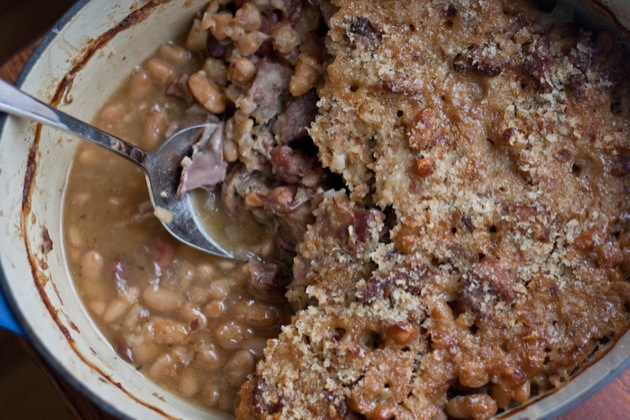
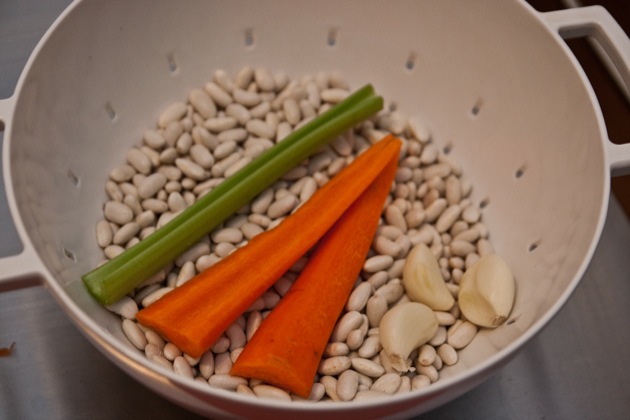
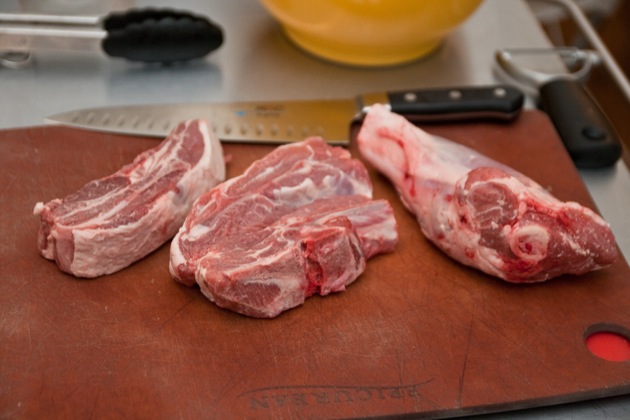
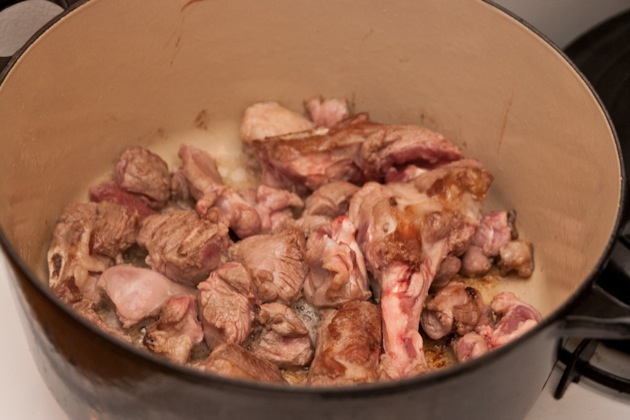
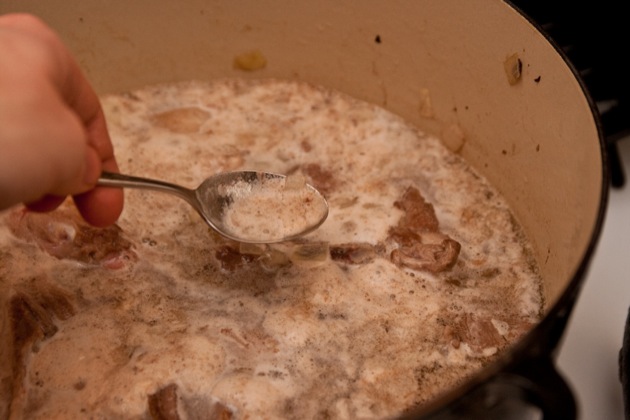
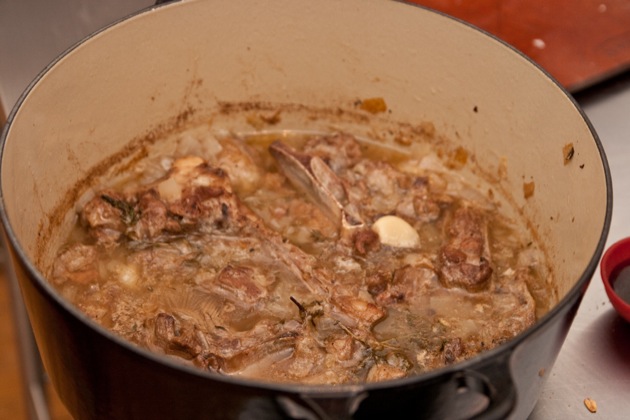
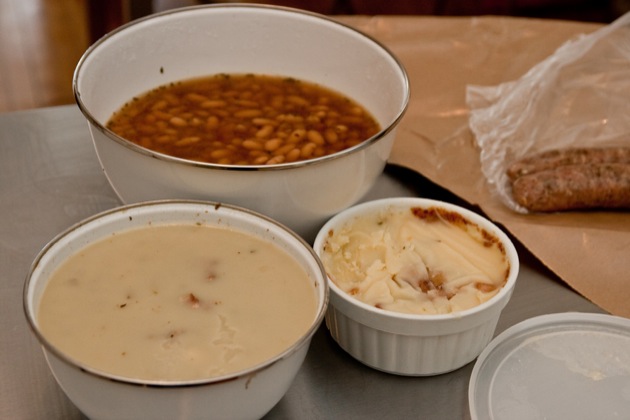
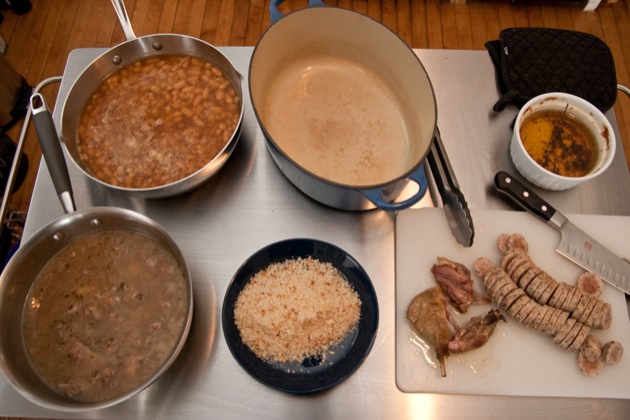
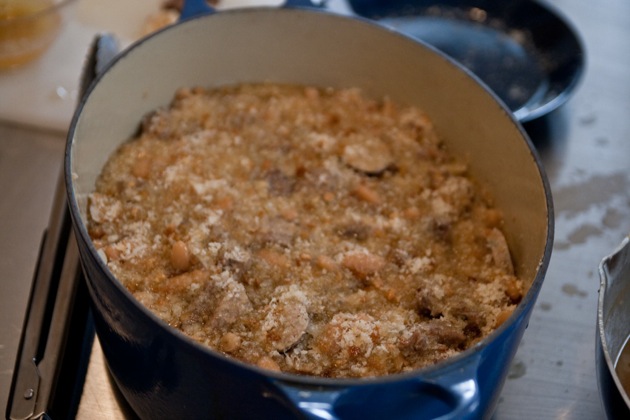
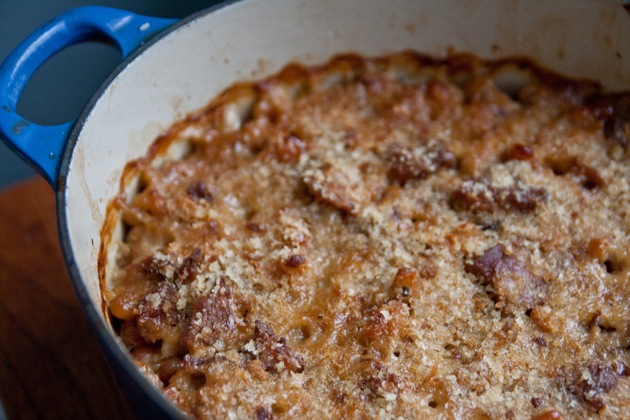
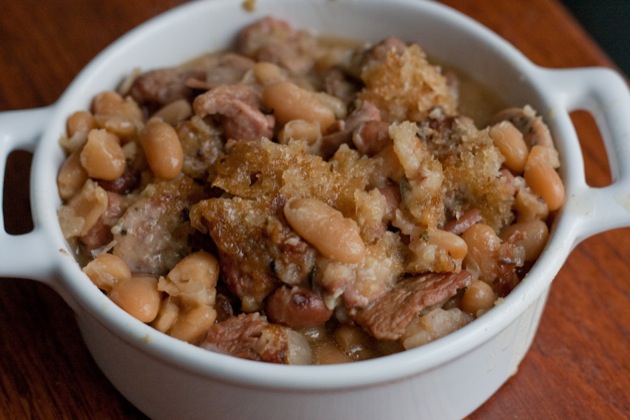
Comments:
Blog Comments powered by Disqus.